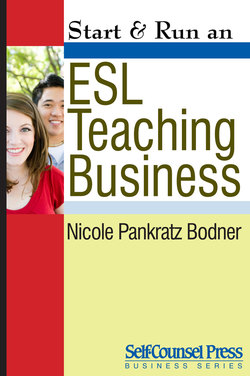Читать книгу Start & Run an ESL Teaching Business - T. Nicole Pankratz - Bodner - Страница 13
На сайте Литреса книга снята с продажи.
Students
ОглавлениеMost students come to North America to put into practice what they have learned in school in their home country. This is especially true for students who come from countries with a homogeneous population, such as South Korea and Japan, where few foreign-born people live. In such circumstances, being able to speak English gives people a competitive edge in the job market. With little opportunity to practice speaking English in their home country, they head to North America to learn English in an English environment. Most private-institute owners understand that what students want more than anything is the opportunity to speak English inside and outside the classroom. Schools that do not offer student-centered, conversation-based programs do not last long.
Many students come to North America with the intention of attending local colleges and universities. In order to get accepted, however, they must pass the Test of English as a Foreign Language (TOEFL). Developed by the Educational Testing Service (ETS), the TOEFL is used as an academic measurement tool in approximately 200 countries. Preparing for the test is challenging. Most private ESL schools offer TOEFL and other academic-preparation classes as electives.
Many students come to North America to prepare for another important test — the Test of English for International Communication (TOEIC). Also created by ETS, the TOEIC is used to measure a person’s potential English ability in the international business world. In many countries, employers require applicants to list their TOEIC scores on their résumé.
Ever-increasing numbers of students are interested in business classes, as well as business internship programs, where students both attend classes and work for North American companies.
